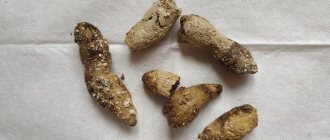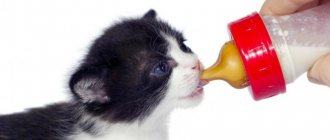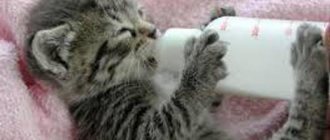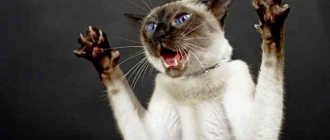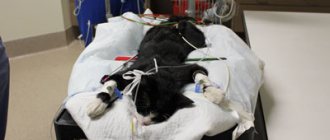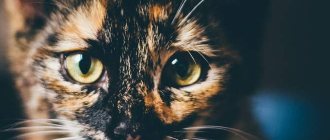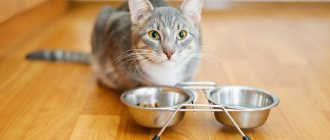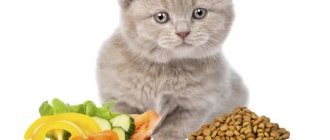Are you not a breeder but have a cat? In this case, the decision to sterilize your pet is definitely the right decision. Unsterilized cats suffer from hormonal imbalances and are prone to developing cancer and other serious illnesses. It just so happens that inexperienced owners consider sterilization a very complex operation, after which the pet needs special lifelong care. If we consider the situation globally, this is not so. You need to properly feed a sterilized cat, play with it and pay attention to it, monitor its weight, and groom it no more than usual. Everything is true, caring for a sterilized cat is no different from general recommendations, there are only a few nuances that need to be kept in mind.
Natural nutrition
Sterilization is an operation to remove the ovaries. After the procedure, the production of sex hormones ceases, which entails physiological and behavioral changes in the cat with undesirable consequences:
- appetite increases;
- motor activity decreases;
- metabolism slows down;
- the number of urinations decreases.
The first three factors lead to weight gain and obesity, the last - stagnation of urine, the formation of sand and stones. The type of food does not change after sterilization, but it is better to review the “menu”. Read more: How to feed obese cats.
You might be interested in:
- What to feed a pregnant cat
Why do you need to review the diet of a sterilized cat?
Hormonal changes slow down metabolism, increasing the tendency to obesity. The animal becomes less active and more voracious, so the usual diet can cause rapid weight gain. Also, after the operation, the frequency of urination is reduced, which is fraught with stagnation of urine and subsequent formation of stones - that is, urolithiasis.
Healthy foods
Half of the diet is made up of proteins, the rest is made up of carbohydrates with fiber and fats.
It includes the following “dishes”:
Poultry, rabbit, beef. This is the basis of nutrition, it is given daily in boiled form, raw food is pre-frozen for 5 - 6 days. Before feeding, cut into pieces. Minced meat is allowed if you prepare it yourself; store-bought stuffing is too fatty. Fresh meat is not fed to avoid infection with helminths.
By-products: lung, kidneys, liver. They contain nutrients that are not found in muscle fibers; they are also frozen or boiled and included in the diet 2 times a week.
Meat broths. It is useful to accustom sterilized pets to this dish: they need an increased amount of liquid, but they are reluctant to drink water.
Vegetables: zucchini, carrots, pumpkin, cabbage. The boiled product is crushed into puree, the raw product is grated. If the pet refuses vegetables in their pure form, they are mixed with chopped meat or broth.
Fermented milk products up to 10% fat. Ryazhenka, sour cream, kefir, yogurt without fillers, and cheese are suitable.
Porridge: rice, barley, wheat, buckwheat. A teaspoon is added to meat or offal. If the animal refuses, then it is replaced with bran.
Vegetable oil, butter. Add 2-5 drops to food to maintain normal coat condition and improve stomach function.
It is useful to sprout greens from wheat grains, oats, or buy ready-made grass at a pet store. Vitamin and mineral supplements are given only on the recommendation of a veterinarian.
What to feed a cat after sterilization
The cat should not be fed immediately after sterilization. The first feeding should not occur earlier than 24 hours after surgery. On the second day, the animal’s diet should include only light, quickly digestible food.
To avoid constipation and suture ruptures, do not feed your pet solid food.
In the postoperative period, low-fat broths and vegetable purees are excellent. Baby meat and vegetable puree in jars is perfect in this case. It contains no salt or sugar and is factory tested.
In veterinary stores you can also find a large selection of special foods for cats after surgery, the main thing is that they do not have a hard consistency.
Unwanted Products
Excessive amounts of magnesium and phosphorus provoke urolithiasis, so food with these microelements is limited. Useless and harmful “dishes” should not be eaten by any cat.
After sterilization, exclude from the diet:
- pollock, cod, and other types of fish are fed boiled no more than 2 times a month;
- sugar, sweets;
- pork;
- legumes;
- oatmeal, semolina;
- smoked meats and sausages;
- potato;
- garlic and onion;
- raw eggs.
Salt also provokes urolithiasis, so do not add salt to dishes.
About breeds and prohibitions
Products that should absolutely not be fed to sterilized cats are highly discouraged for consumption by healthy animals:
- Fresh and fatty meat.
- Fresh fish.
- Bones.
- Sweets and products containing sugar.
- Salt, marinades, spices, smoked meats.
- Beans, corn, semolina, soybeans.
- Potato.
Pedigree cats often have a genetic predisposition to certain diseases. When purchasing a purebred animal, consult in advance about feeding, since after sterilization you may encounter difficulties in creating a diet. A little example:
- British, Scottish Fold and Persian cats should be kept on a low-salt diet, as they are prone to ICD.
- Bengal cat needs to be fed more abundantly, since representatives of the breed are very active.
- The Maine Coon is a large cat that needs nourishment, regardless of whether it is neutered or not.
- The Sphynx is a breed with a predisposition to food allergies, which can create special difficulties when creating a diet.
Your veterinarian may recommend switching an older, neutered cat to medicated food. The logic here is obvious: the older the pet, the slower its metabolism. If the doctor sees the prerequisites for urolithiasis or a urine test shows a bad result, the use of medicinal food for prevention is justified.
Feeding regimen and norms
After sterilization, the cat eats more and moves less; the amount of food eaten must be controlled. It is better to find out the exact weight before surgery, and then periodically weigh the pet and make sure that the numbers do not increase.
The daily norm is calculated based on the size of the animal: 30 - 50 g of food per 1 kg of body weight or up to 5% of the total weight. The main indicator of a correctly calculated norm is stable weight. If it increases, the animal overeats; if it decreases, there is not enough food.
According to the observations of doctors, the average cat requires 140–250 g of food per day, of which:
- 70 – 120 g meat;
- 30 – 60 g of lactic acid products;
- 35 – 50 g vegetables;
- 10 – 20 g of cereals.
The pet is fed at certain times twice a day; food cannot be given on demand. When signs of obesity appear, when the ribs cannot be felt, they switch to fractional meals. The number of meals is increased to 4–5 times, portions are reduced, and the daily intake is divided into parts.
Preoperative and postoperative diet
Before a full transition to a new diet, your pet will have to take a fasting day and go on a postoperative diet. With its help, she will be able to prepare her body for the upcoming changes.
Hunger strike before anesthesia
Preparation for general anesthesia includes mandatory refusal to eat 12 hours before surgery. This is necessary in order to prevent sudden attacks of vomiting. Otherwise, the unconscious animal may choke and suffer from aspiration pneumonia. For the same reason, it is recommended to remove the water, but a little later - 3 hours before surgery.
The first day after surgery
Feeding a sterilized cat on the first day after surgery is not provided. She won't have an appetite right after she wakes up, so don't even try to persuade her to eat a big lunch. Instead, offer some water to prevent dehydration.
Please note that only an awakened animal can be given water. Gently wet his lips with a damp cloth or pour a small amount of liquid directly into his mouth using a syringe or dropper. A bowl of water can be given only 3-4 hours after waking up, when the pet becomes more active.
First week after surgery
Food is introduced on the second day, but only when interest appears. If your pet categorically refuses it, you can keep her on a starvation diet for another 1-2 days. All this time she must drink water regularly, since dehydration is much more dangerous than a hunger strike.
All food served should be easily digestible and soft, and the size should be reduced to 1/3 of the normal serving. Focus on the following products:
- wet canned food and spider meat pieces;
- fermented milk products with low fat content;
- lean broths;
- slimy porridges cooked in water.
Harder foods can cause constipation, which can cause your stitches to split. You should also avoid extremely high and low temperatures that irritate the gastric mucosa.
Gradually increase your serving size to get back to normal within a week. Please note that it should not exceed 150 g per day.
Transition to normal food
They return to their usual diet about a week after surgery, but with minor adjustments. In addition to reducing the overall calorie content, you will have to give up a number of dishes familiar to the animal.
With dry feeding everything is much simpler. All standards can be viewed on the packaging, and the composition of such a product excludes the presence of substances harmful and useless to the body. The owner can only decide what kind of food to feed the cat after sterilization, since there are not so few options marked Sterilized.
Ready food
It is better for the owner to weigh the financial possibilities in advance and decide on the brand. It is unacceptable to give holistics first, and then a week later switch to Whiskas from the nearest supermarket.
Veterinarians recommend not paying attention to advertising slogans, but carefully reading the description on the packaging.
High-quality food has the following characteristics:
- The components are listed in detail in descending order, with meat coming first.
- The names of the ingredients can be understood by a person without special education.
- There are no dyes or flavoring additives; the shorter the list of ingredients, the better.
The daily dosage is indicated on the package; the lower it is, the more nutritious the product. This is important for dry food: cats do not like water, and they need 3 times more water than what they eat.
The composition contains L-carnitine and L-lysine: the first component accelerates metabolism, stimulates fat burning, the second maintains muscle mass.
You can make sure that your choice is correct after 2–3 weeks by looking at the pet’s appearance and well-being. The food is suitable if she has a smooth and shiny coat, normal digestion, regular bowel movements, and a moderately well-fed body.
What is sterilization?
Let's understand the terminology: sterilization and castration. Many people believe that cats are castrated and cats are sterilized, but this is not true.
Castration is the removal of reproductive organs: in cats the uterus and ovaries, in cats the testicles.
Sterilization is another procedure in which a cat's fallopian tubes are tied, and males' spermatic ducts are ligated.
After sterilization, the animal continues to “walk”, mark, and in the case of a cat, ask for a cat.
If you care about your health. After such an operation, the cat will not suffer from hormonal imbalances. However, for some reason, the term “castration” scares owners, especially men. The widespread use of the term “sterilization” is nothing more than an attempt to avoid the wrong reaction of inexperienced owners.
When a cat reaches sexual maturity, the owners experience round-the-clock meowing, eyes full of sadness, rolling on the floor, walking with their butt up, and so on for 10–14 days. Sleepless nights, complaints from neighbors, a generously marked front door, if street cats have access to the entrance... stop! All these are your problems that you feel and see, but what happens to the animal? Something like this:
- In the first days of estrus, the cat will experience constant mood swings and nagging pain in the abdominal cavity.
- Further, the pain intensifies, the cat begins to roll on the floor. Some owners observe the cat's behavior with interest, believing that she likes it. Often this opinion is reinforced because the cat purrs. In fact, all these manipulations are undertaken by the cat to stop or dull the pain from spasms.
- The peak of estrus, intended for fertilization, passes, and is replaced by a hormonal imbalance - the system did not work as it should, all the hormones that prepare the cat’s body for motherhood are not needed and the body is forced to cope with this situation.
Have you read it, been horrified, and are already going for miracle pills like “Stop Heat”? Take your time, read on. So, the owner looks at the animal’s suffering and chooses one of four options:
- Submit to nature , breed a non-pedigreed (without pedigree) cat and acquire a new problem - kittens that no one wants. Statistically, even if you manage to place a new offspring, 70% of your graduates will suffer a very difficult fate. Simply put, they will join the ranks of homeless animals. Another point - one mating, one birth, one feeding - this is a wild overload of the body and a solution to the problem with estrus for a year at best (some cats can give birth 2 times a year). It's worth it?
- Tolerate the screams and wait for the cat to take a walk - of course, during the first heat, this is what you need to do in order to sterilize the cat later. If you decide for yourself and for the cat that you will endure it all its life, the pet is guaranteed to develop health problems, and its lifespan will be reduced by about 3 years. By the way, it is better to carry out the operation before the first heat.
- Giving pills is the most thoughtless and harmful decision an inexperienced owner can make. It is known that even after one dose of such drugs, cats can develop pathologies of the uterus and ovaries. Regular use of medicinal contraceptives leads to the development of chronic diseases of the reproductive system and oncology.
- Sterilize the cat.
The choice is yours! If your cat lives in the house as a companion and a member of the family, you do not plan to go to exhibitions and devote your life to the development of a certain breed - the reasonable choice is obvious.
It was already mentioned above that it is better to sterilize a cat before the onset of the first heat or 2-3 weeks after it (sometimes it is very difficult to predict the timing of the onset of heat). The operation should be performed only by a trusted doctor with a good reputation. The procedure is performed under anesthesia. An incision up to 2 cm long is made on the cat's side or along the linea alba (on the stomach). The incision site is preliminarily injected with local anesthesia and adrenaline (to reduce blood loss). Next, the uterus and ovaries are removed from the abdominal cavity, clamps are applied, and cutting is performed. If the operation is performed with a cautery, the incision site is immediately cauterized; using a scalpel, the surgeon (if necessary) stops the bleeding.
After removing the uterus and ovaries, three sutures are applied: deep, muscular and external. The incision site is treated with antiseptics, and a blanket is put on the cat. The procedure takes from 30 minutes to 2 hours, depending on the technique and instruments used.
After surgery, the cat quickly recovers from anesthesia, but remains lethargic for 18–24 hours. The pet will sleep a lot, your task is to make sure that it does not freeze (especially in winter), has access to water and does not show excessive activity. In the first days after sterilization, it is recommended to feed the cat only soft and liquid foods so that the pet does not have to strain the peritoneum during defecation. If the operation was performed efficiently, the suture will scar after 2–3 days. Sometimes the seam gets wet and ichor accumulates under the skin, but these problems are easily solved.
Important! After sterilization, the cat must wear a blanket or Elizabethan collar. The seam should remain dry and the cat should not lick it. When wearing a blanket, no additional dressings are required!
If the external suture is not applied with a self-absorbing thread, it is removed after 7–10 days. Many veterinarians insist on a course of antibiotics (3-5 days) after surgery. By and large, this measure is fair, but do not forget that antibiotics kill all bacteria, including friendly ones. Make sure your cat receives probiotics and only healthy, easily digestible food.
How does nutrition affect the body of a sterilized cat?
There is a myth that a neutered cat will definitely gain weight. Why a myth? Let's figure it out now. After sterilization, the animal’s sexual instinct decreases, and the released energy is redirected towards searching for food . Simply put, a neutered cat may eat out of boredom. If the animal eats according to a schedule and is balanced, weight gain is a priori impossible. So on what grounds did the myth appear? On the following, many owners:
- They leave the cat a full bowl of food, the pet eats when it wants, as much as it wants, and overeats.
- Do not play with the cat or provoke it into activity - most four-legged animals tend to lead an active lifestyle. There are exceptions - cats with a phlegmatic character.
- They believe that there is no need to communicate with a cat - cats are very social, without communication they fall into a state of stress, which is partially alleviated by gluttony.
Are these reasons related to sterilization? Of course not! With this lifestyle, any cat will gain weight. Prevention of obesity is:
- Weigh regularly ; keep in mind that after sterilization, a young and even adult pet may grow a little (bones, muscles).
- Feed your cat on a schedule , for example, morning and evening.
- Ban on treats from the table.
- Physical activity – if you don’t have time to play with your cat, make sure it has interactive toys, climbing posts, the ability to climb on high furniture, etc.
- Nutritional balance is an important aspect in feeding any animal. Cats a priori do not need carbohydrates; their body synthesizes energy from proteins. Rice or buckwheat is introduced into the cat’s diet as a filler (and not the main part). If your pet has an attack of gluttony, porridge is out of the question.
- Normal content of vitamins and microelements in food - deficiency and excess leads to metabolic disorders. In sterilized cats, excess minerals lead to the formation of edema.
Properly feeding a sterilized cat means monitoring your pet’s needs and not going to extremes. Some sources contain strict prohibitions on eating fish, but they are, to put it mildly, unfounded. Argument: fish contains a lot of minerals. Doesn't a cat need minerals? Of course they are necessary, but there must be moderation in everything. You can’t feed your cat fish every day (especially fatty ones), but sometimes you can eat a little.
Review of brands
Economy class food is not suitable: these are Friskas , NashaMarka , Kitikat , Whiskas . They contain 0.5% proteins, a lot of useless carbohydrates, and chemical flavor enhancers.
Manufacturers of premium and super premium products produce special lines for sterilized and neutered animals marked Sterilized . They are characterized by a reduced content of fat, phosphorus and magnesium.
Here are examples of special feeds in the mid-price category:
- Royal Canin. The diversity of the assortment is considered a plus. The manufacturer has developed 4 types of products: for kittens up to one year old, up to 7, over 7, and over 12 years old. In addition to dry granules, semi-liquid jellies, sauces, and pates are produced. Dehydrated poultry protein is listed at the top of the ingredient list, but its origin is not specified.
- Hill's. The company produces 3 varieties: dry granules for cats from 6 months to 6 years, over 6, and spiders. The first line of the list of ingredients is chicken, the composition includes L-carnitine, fat does not exceed 9%.
- 1st Choice. The products are made from fresh chicken. The food has a good composition of plant carbohydrates: it does not contain unhealthful corn and wheat, but contains brown rice, oat and barley kernels.
- ProPlan. In addition to dry food, the company produces canned and packaged food with poultry, ocean fish, and beef. The amount of protein reaches 41%, but wheat and corn gluten are present.
- Holistic products have a high protein content: from 40 to 75%, these are Now Natural, Acana, Go!, Orijen. There are no special dietary lines among them, but they are suitable for pets after sterilization. Holistic medications are given to animals with renal impairment with caution.
The pet is fed twice a day; granules should not be poured into the bowl uncontrollably. The daily dose is prescribed on the package, it is divided into 2 equal parts. Dry and wet food alternate, stick to products of the same brand.
There is no definitive “best” diet for a neutered cat. The main thing is to include foods that are healthy for the animal in a natural diet or to carefully select commercial food. If your pet eats with appetite, does not gain weight, does not suffer from illness and looks well-groomed, the diet is suitable.
Place for eating
While eating, the cat should not be disturbed by anything or anyone - this will help avoid digestive problems.
It is also important to choose a suitable place for feeding your pet: quiet and calm enough so that no one disturbs it, in order to avoid absorbing food too quickly (in this case, there is a high probability that the cat will vomit the food). The place should also be clean, at a fairly large distance from the tray. You can use a special mat on which you will place the bowl. If there are many animals in the house, the bowls should be at a sufficient distance from each other. Well, if the pets don’t get along with each other, their feeding places need to be separated altogether. Feeding times should always be the same.
How to understand that the food has been chosen correctly
The appearance and behavior of the pet will unmistakably make it clear that the diet has been chosen correctly.
You can determine whether you have chosen the right diet for your cat by its behavior. If she eats well and with pleasure, she has regular bowel movements (no constipation or stomach upsets are observed), her hair is shiny and does not fall out, and you see that she feels good - it means that you are doing everything right and the cat has enough food, water and vitamins It can be adjusted over time depending on your pet's reactions and changes in behavior.
Easily digestible foods for diseases of the stomach and pancreas
Not all easily digestible foods may be suitable for nutrition for diseases of the stomach and pancreas.
So, vegetables and fruits without heat treatment are rich in fiber, and this can injure the mucous membrane of a diseased stomach and negatively affect the pancreas.
Experts recommend consuming the following products:
- white, lean meat;
- baked apples;
- bananas;
- dairy products;
- sea fish;
- rice, buckwheat, oatmeal porridge;
- steamed or boiled vegetables;
- compote, jelly;
- non-acidic berries.
Proper nutrition for a number of diseases can significantly improve a person’s condition.
Which vegetables are easily digestible?
Vegetables are used daily in the diet; they contain useful elements and are easily processed. The body processes green leafy vegetables the fastest. They contain substances that help speed up the digestion process, so it is useful to eat leafy salads as a side dish.
The most easily digestible vegetables:
- asparagus;
- spinach;
- leaf salads;
- carrot;
- beet;
- zucchini;
- pumpkin;
- green bean.
Fruits and vegetables contain a large amount of fiber, which speeds up the digestion process. Therefore, they are considered the most easily digestible foods.

